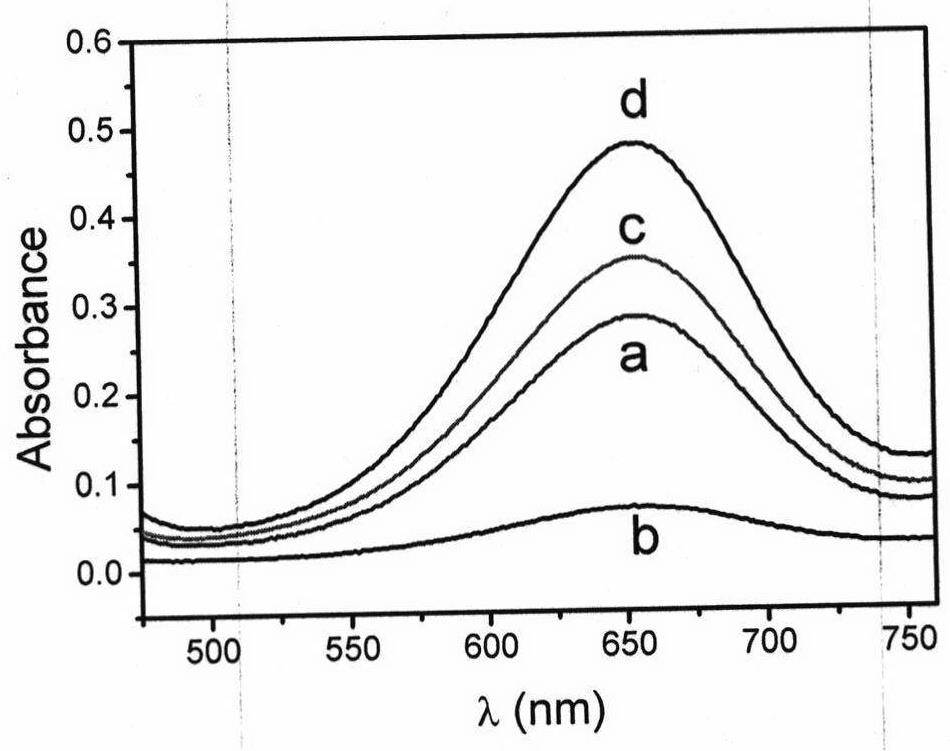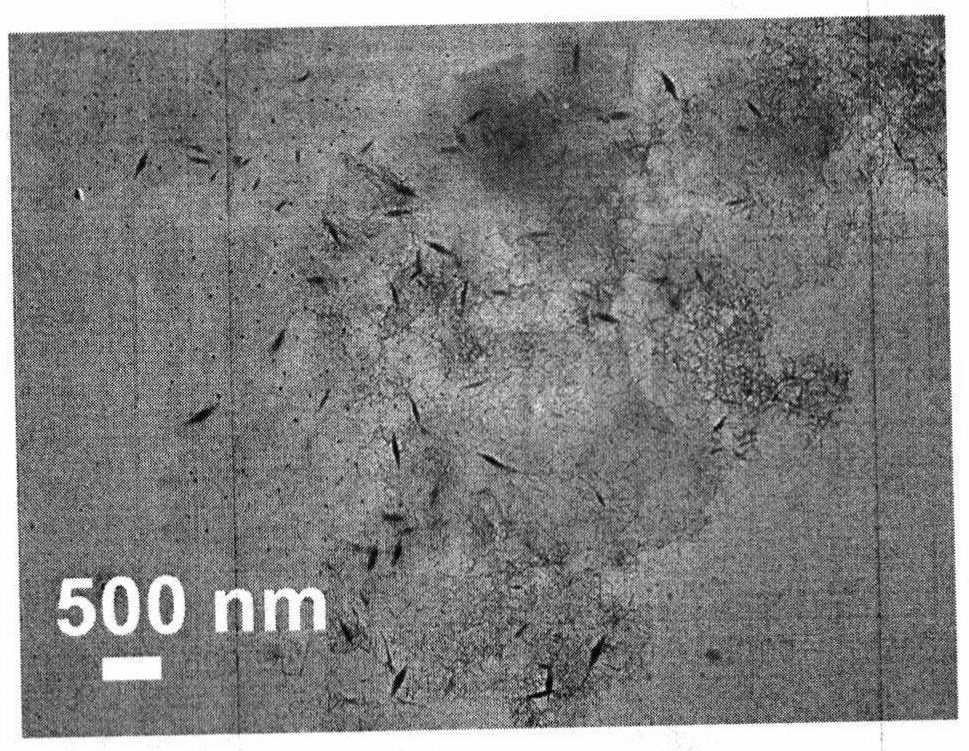Nano-enzyme compounded by copper nano-particles and ferriporphyrin nano-sheets as well as preparation and application of nano-enzyme
A technology of nanoparticles and nanosheets, applied in the field of imitation enzyme catalysis, can solve the problems of increasing the cost of imitation enzymes, and achieve the effect of enhancing root peroxidase activity and efficient decolorization
- Summary
- Abstract
- Description
- Claims
- Application Information
AI Technical Summary
Problems solved by technology
Method used
Image
Examples
Embodiment 1
[0042] Preparation of nanozymes composited with copper-based nanoparticles and iron porphyrin nanosheets:
[0043] (1) The Cu-FeTCPP nanosheet prepared in Comparative Example 1 is dispersed in water so that its concentration is 0.3 mg / mL;
[0044] (2) Take 10 mL of the solution in step (1), add 0.1 mL of an aqueous solution of copper chloride with a concentration of 0.12 M, and mix well, then add dropwise 1 mL of an aqueous ammonia solution with a mass fraction of 0.1%, and react at 20° C. for 1 min;
[0045] (3) The product is centrifuged and precipitated and washed with pure water for 3 times to obtain the nanozyme.
[0046] The main components of copper-based nanoparticles include copper hydroxide and copper oxide, such as figure 2 As shown, the copper-based nanoparticles are in the form of nanoparticles, nanoneedles and nanorods, among which nanoparticles and nanoneedles are the main ones. 300nm, uniformly distributed on the surface of the nano-sheets; the mass ratio of...
Embodiment 2
[0059] Preparation of nanozymes composited with copper-based nanoparticles and iron porphyrin nanosheets:
[0060] (1) The Cu-FeTCPP nanosheet prepared in Comparative Example 1 is dispersed in water so that its concentration is 0.3 mg / mL;
[0061] (2) Take 10 mL of the solution in step (1), add 0.15 mL of an aqueous solution of copper chloride with a concentration of 0.12 M, and mix well, then add dropwise 1.2 mL of an aqueous ammonia solution with a mass fraction of 0.1%, and react at 25° C. for 3 h;
[0062] (3) The product is centrifuged and precipitated and washed with pure water for 3 times to obtain the nanozyme.
[0063] The main components of copper-based nanoparticles include copper hydroxide and copper oxide, such as Figure 5 As shown, the morphology of copper-based nanoparticles is mainly in the shape of nanoneedles and nanorods. The diameter of nanoneedles is 20-40 nm, and the length is 100-300 nm. The diameter of nano-rods is 50-70 nm, and the length is 200-300 ...
Embodiment 3
[0076] Preparation of nanozymes composited with copper-based nanoparticles and iron porphyrin nanosheets:
[0077] (1) The Cu-FeTCPP nanosheet prepared in Comparative Example 1 is dispersed in water so that its concentration is 0.3 mg / mL;
[0078] (2) Take 10 mL of the solution in step (1), add 0.2 mL of an aqueous solution of copper chloride with a concentration of 0.12 M, and mix well, then add dropwise 1.5 mL of an aqueous ammonia solution with a mass fraction of 0.1%, and react at 25° C. for 6 h;
[0079] (3) The product is centrifuged and precipitated and washed with pure water for 3 times to obtain the nanozyme.
[0080] The main components of copper-based nanoparticles include copper hydroxide and copper oxide, such as Figure 6As shown, the morphology of copper-based nanoparticles is dominated by nanoneedles and nanorods. The diameter of the nanoneedles is 20-40 nm, and the length is 100-300 nm. The diameter of the nano-rods is 50-70 nm, and the length is 200-300 nm. ...
PUM
| Property | Measurement | Unit |
|---|---|---|
| particle diameter | aaaaa | aaaaa |
| diameter | aaaaa | aaaaa |
| diameter | aaaaa | aaaaa |
Abstract
Description
Claims
Application Information
 Login to View More
Login to View More - R&D
- Intellectual Property
- Life Sciences
- Materials
- Tech Scout
- Unparalleled Data Quality
- Higher Quality Content
- 60% Fewer Hallucinations
Browse by: Latest US Patents, China's latest patents, Technical Efficacy Thesaurus, Application Domain, Technology Topic, Popular Technical Reports.
© 2025 PatSnap. All rights reserved.Legal|Privacy policy|Modern Slavery Act Transparency Statement|Sitemap|About US| Contact US: help@patsnap.com



